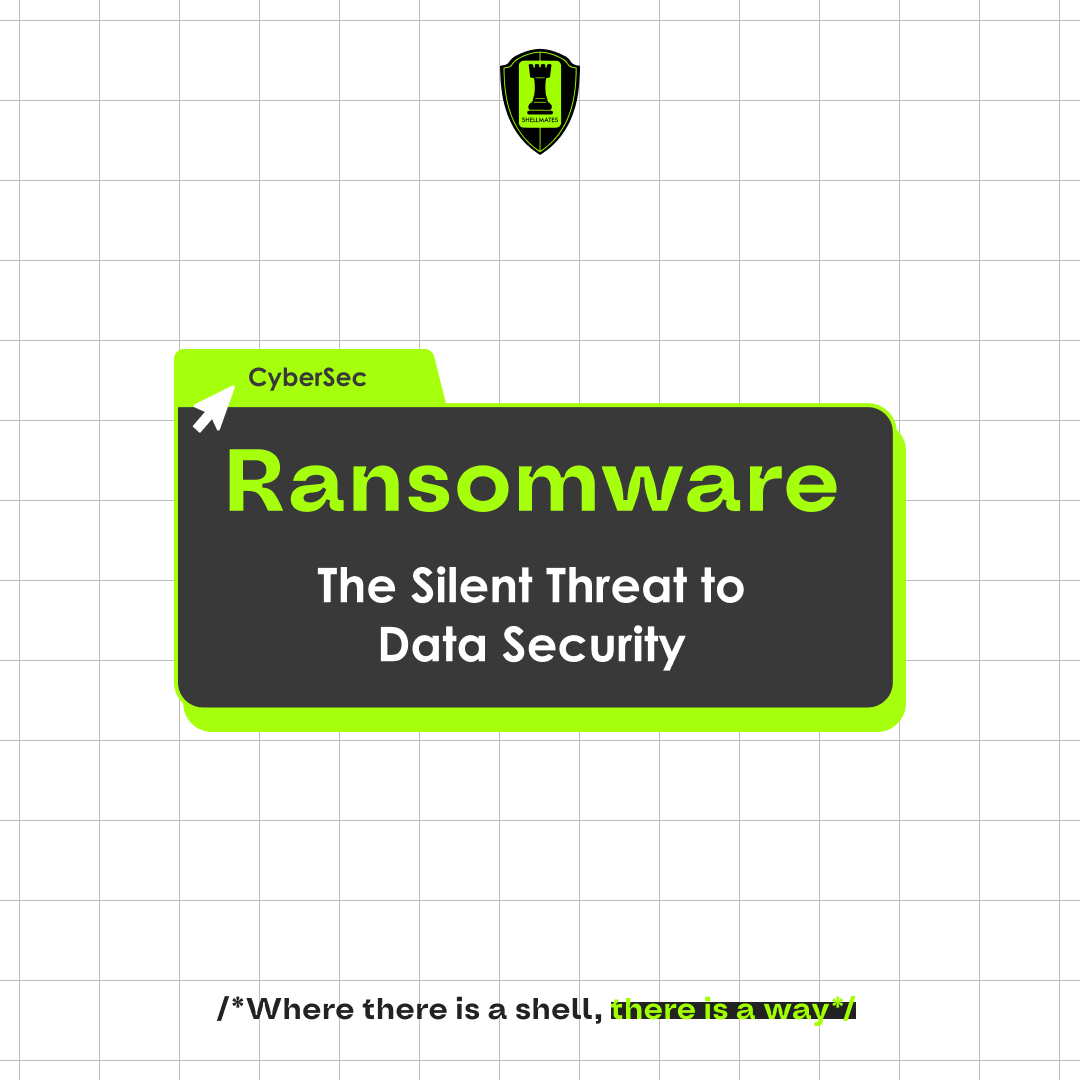Ransomware : The Silent Threat to Data Security | by Shellmates Club | Sep, 2023
released by our members : Ait Si Amer Sara, Belharda Aya ,Mechitoua Ikram
Ransomware, the dark specter of the digital realm, is a malevolent form of malware that thrives on fear. It operates by wielding a digital guillotine over its victims, either locking them out of their own data or encrypting it to an unreadable state. The malefactors behind ransomware attacks then exploit this digital stranglehold to demand a ransom for the safe return of the hostage data. This menacing digital charade often begins with a Trojan horse, a seemingly innocent file that dupes the user into downloading or opening it.
Ransomware’s arsenal of infiltration tactics includes:
- Phishing Emails Using Social Engineering: Attackers impersonate authority figures, crafting cunning phishing emails to trick employees into clicking malicious links.
- Malvertising and Exploit Kits: Malvertisements and exploit kits sow the seeds of ransomware through deceptive pop-ups and concealed malicious code. Exploit kits scan for vulnerabilities to initiate their attacks.
- Fileless Attacks: These stealthy techniques sidestep traditional antivirus solutions by exploiting system tools like PowerShell, eliminating the need for malicious files.
- Remote Desktop Protocol (RDP) Exploitation: Cybercriminals prey on RDP vulnerabilities to gain unauthorized access, surreptitiously leaving back doors for future maleficent endeavors.
- Targeting Managed Service Providers (MSPs) and Remote Monitoring and Management (RMM) Software: MSPs’ RMM software can become conduits for data breaches, imperiling both the MSP and its clients.
- Drive-By Downloads: Ransomware deploys drive-by attacks to exploit web browser vulnerabilities and infect devices without user interaction, often leading to data theft.
- Pirated Software: Illicit copies of software, bereft of automatic updates, provide fertile ground for ransomware proliferation.
- Network Propagation: Modern ransomware strains wield the power of self-propagation within networks, infecting multiple devices, and crippling organizations.
- Malware Obfuscation: Some ransomware groups employ open-source software protection tools to obfuscate their malware, complicating detection.
- Ransomware as a Service (RaaS) and…

